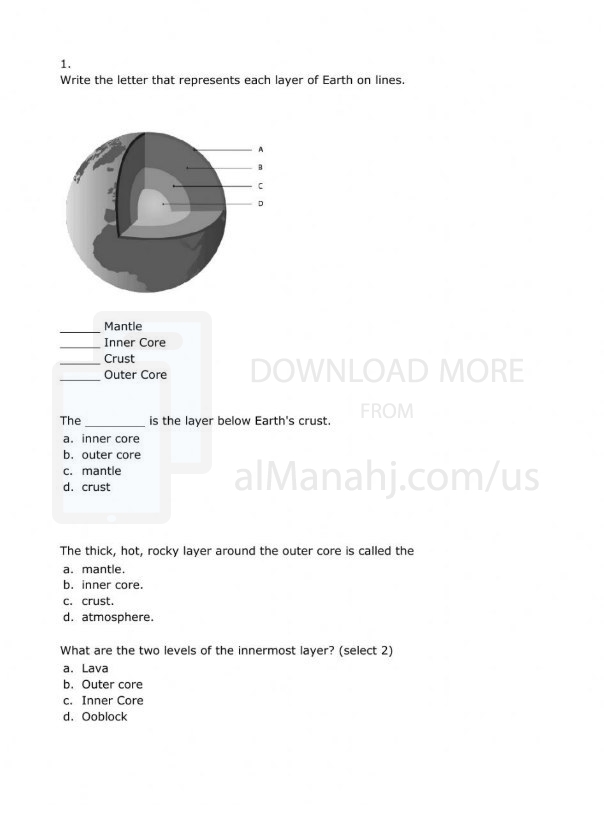| You are here: Almanahj Website ⇒ American curriculum ⇒ 11th Grade ⇒ Geology ⇒ Term 1 | ||
|---|---|---|
Worksheet about Earths Interior | ||
|---|---|---|
| Subject: Geology | ||
| 11th Grade | ||
| Term 1 | ||
| Year: 2023/2024 | ||
| Size: 390.5KB | ||
| Number of clicks: 109 | ||
| Publish date:November 25, 2023 | ||
| Added by: Eman | ||
| Last download date: 2024-08-31 14:03:53 | By: theodor Carolyn Chunyo | |
| File info: Earth's interior refers to the structure and composition of the layers beneath the Earth's surface. The Earth is composed of several concentric layers, including the crust, mantle, outer core, and inner core. Each layer has distinct properties and is composed of different materials. 1. Crust: The crust is the outermost layer of the Earth and is relatively thin compared to the other layers. It is divided into two types: the continental crust and the oceanic crust. The continental crust is thicker and less dense, primarily made up of granite rocks. The oceanic crust is thinner and denser, composed mainly of basalt rocks. 2. Mantle: The mantle is the layer beneath the crust and is the thickest layer of the Earth. It extends to a depth of about 2,900 kilometers (1,800 miles). The mantle is primarily composed of solid rock, but it can deform and flow slowly over long periods of time. The uppermost part of the mantle, called the asthenosphere, is partially molten and flows more easily than the rest of the mantle. 3. Outer Core: The outer core is a liquid layer located beneath the mantle, extending from about 2,900 to 5,150 kilometers (1,800 to 3,200 miles) in depth. It is primarily composed of molten iron and nickel. The outer core is responsible for generating Earth's magnetic field through the movement of electrically charged materials. 4. Inner Core: The inner core is the innermost layer of the Earth, extending from about 5,150 to 6,371 kilometers (3,200 to 3,959 miles) in depth. It is a solid sphere primarily composed of iron and nickel. Despite the high temperatures, the immense pressure at the center of the Earth keeps the inner core in a solid state. Studying Earth's interior is challenging due to its inaccessibility, but scientists use various methods, including seismic waves, laboratory experiments, and computer modeling, to infer its properties and gain insights into the structure and dynamics of our planet. | ||
| Downloading link Worksheet about Earths Interior |
|---|
|
1700897570.pdf
The file is being prepared for download
|
| File images |
|---|
 |